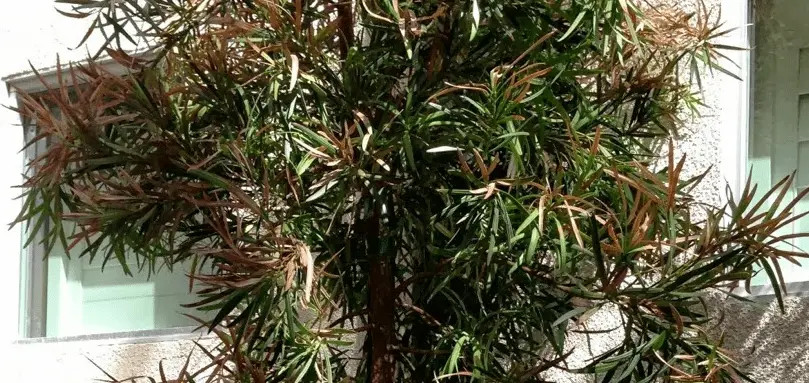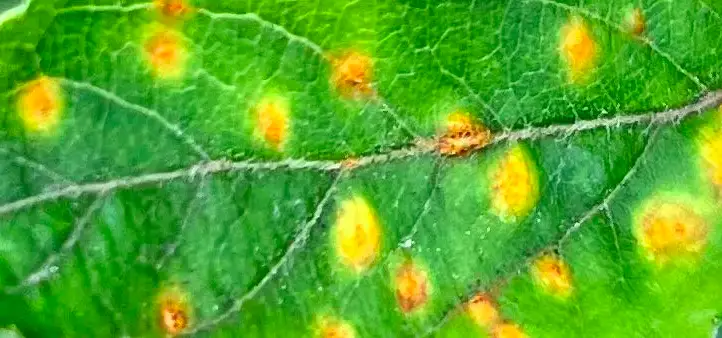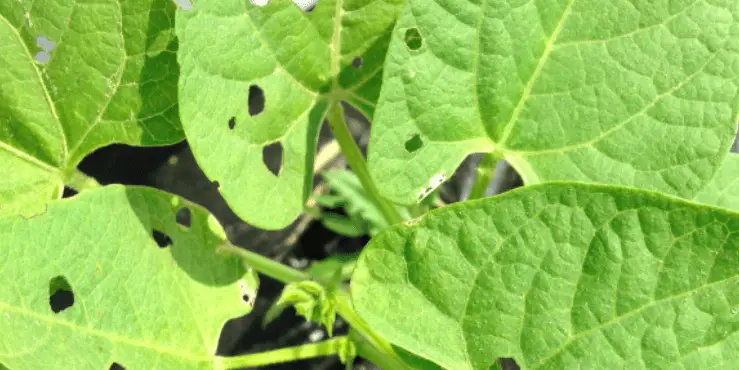Sooty mold is a type of fungus that can grow in the home. It has the ability to take over surfaces and be extremely difficult to remove. The good news is, there are natural ways to get rid of sooty mold!
What Is a Natural Way to Get Rid of Sooty Mold?
My favorite natural way to get rid of sooty mold is to create a baking soda spray. Mix one tablespoon of baking soda with one tablespoon of dishwasher soap into 2-3L of water.
Next, spray your affected plant (or surface) every week until the sooty mold subsides. You can also use a solution of milk and water, but I’ve found the baking soda spray to be most effective.
How Do You Remove Sooty Mold From Leaves?
- Mix 1 tablespoon of dish soap and 1 tablespoon of baking soda into 2-3L of water
- Use a sponge to wipe the mixture over all moldy areas
- The sooty mold should loosen and become easier to remove
- Keep going until all mold is removed and your leaves are clean
How Do You Prevent Sooty Mold?
The best way to prevent sooty mold in the first place is by ensuring the air around your plants is circulating properly.
Make sure windows and doors are closed tightly, turn off fans, and avoid hanging misting bottles near leaves to prevent mold growth.
If you notice sooty mold starting to grow on any of your houseplants or surfaces then use one of these natural ways to get rid of it!
You should also be on the lookout for any pests that might be leaving honeydew on your plant leaves. This provides a sticky surface for the fungal spores to stick on to.
Thrips, aphids, and mealybugs are all common houseplant pests that can cause sooty mold to grow on your plants!
I recommend using neem oil, which is a natural insecticide that targets pests without harming your plants. I use it on my houseplants all the time and it works great!
Will Sooty Mold Kill My Plants?
No! Sooty mold does not kill plants on its own. It is an indicator that something else might be wrong with them, like pests or fungal diseases
The sooty mold itself is harmless to your plant and can typically be removed by using a baking soda spray. However, you should still take the time to treat whatever issue caused sooty mold to start growing on your plants
If you take the time to find and treat any problems that may cause sooty mold, then there is no reason for it to disappear! If you’re having trouble identifying what’s causing issues with your houseplants, consider hiring indoor gardening professionals.
They can come in and make sure your plants are being taken care of!
Is White Oil Good for Sooty Mold?
Yes, using white oil is a natural way to prevent bugs from causing sooty mold.
White oil coats and suffocates pests that are making it impossible for your plant leaves to breathe. It also prevents eggs from hatching on any honeydew left behind by insects, which means no more new pest problems in the future!
It’s safe for both indoor and outdoor plants, but remember that it is a pesticide. Use with caution or hire an expert!
Do Pests Cause Black Sooty Mold?
Yes, pests can bring the black sooty mold to your plant as they leave behind a sticky substance. The airborne mold then sticks to this substance and then spreads further to other leaves.
If you see any sort of sticky substance on your plant then it’s likely that pests are responsible for bringing the black sooty mold over from another source. I suggest using neem oil or a baking soda spray in this case!
Conclusion
In conclusion, sooty mold can be a pretty big problem if it isn’t dealt with, but thankfully there are natural ways to get rid of sooty mold.
If you’re looking for the best way to prevent and remove this fungus then I recommend creating a baking soda spray or using neem oil as your weapon against these pesky spores!
Tim is an avid gardener from the UK. He was the founder of PlantCarer.com from 2021 to Sep 2023. He sold PlantCarer.com to Aaron. He has since started his own business called Seed To Supper, which provides new gardeners all the materials you need in a box (pots, seeds, compost and instructions) to grow your own delicious and nutritious vegetables and herbs from start to finish – no garden required.









0 Comments